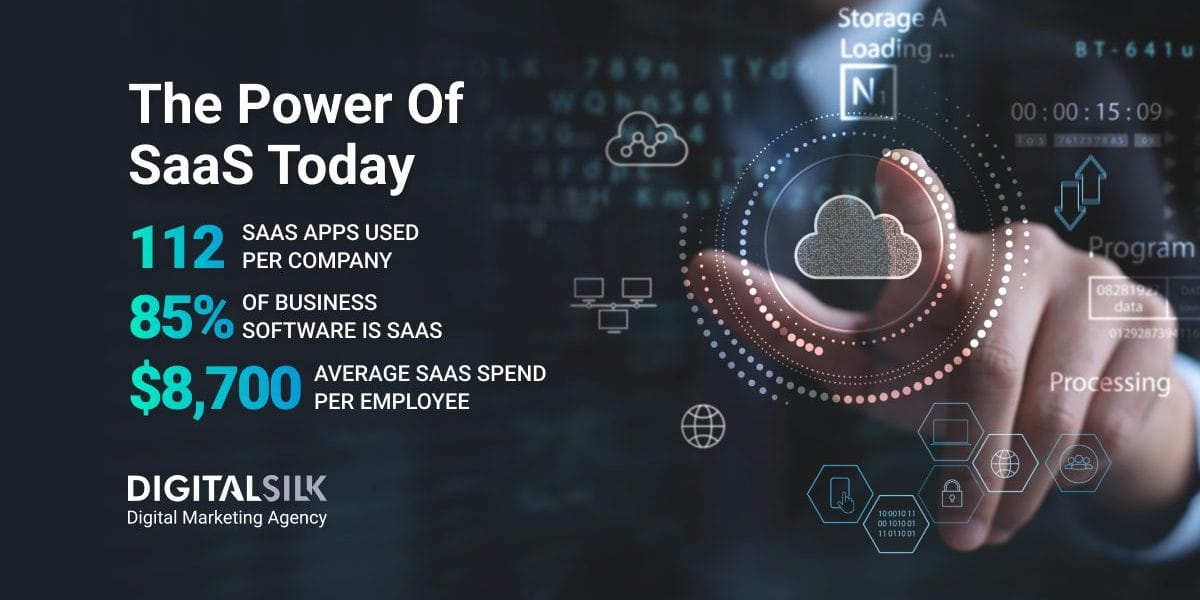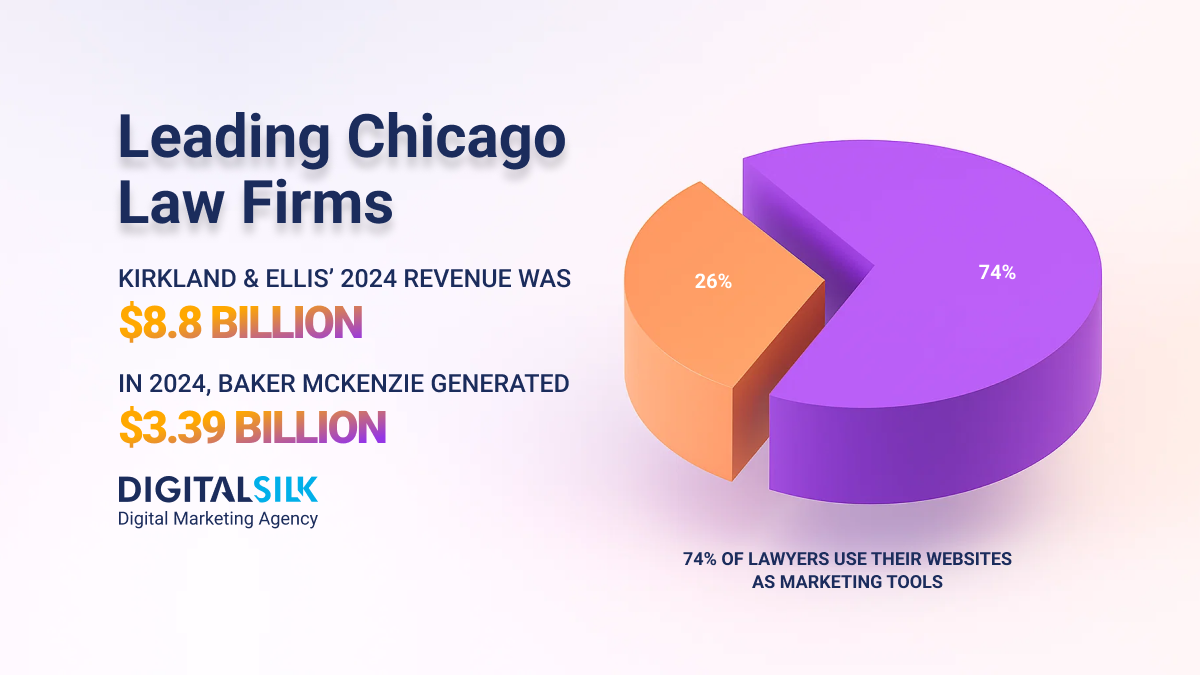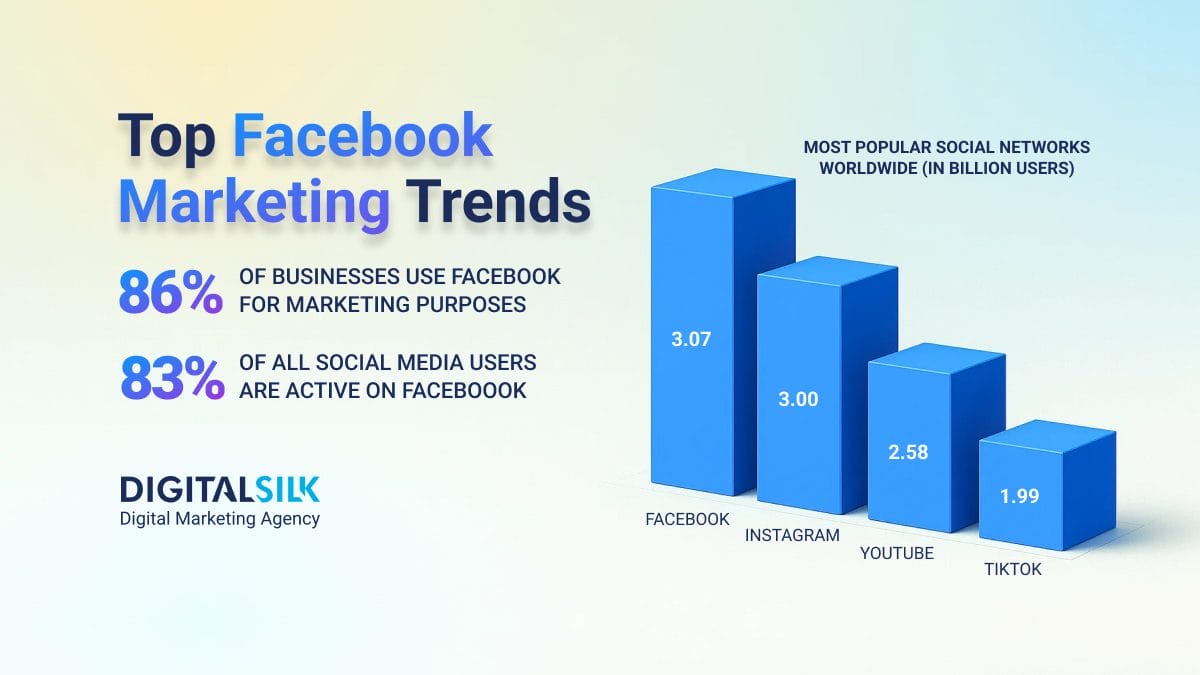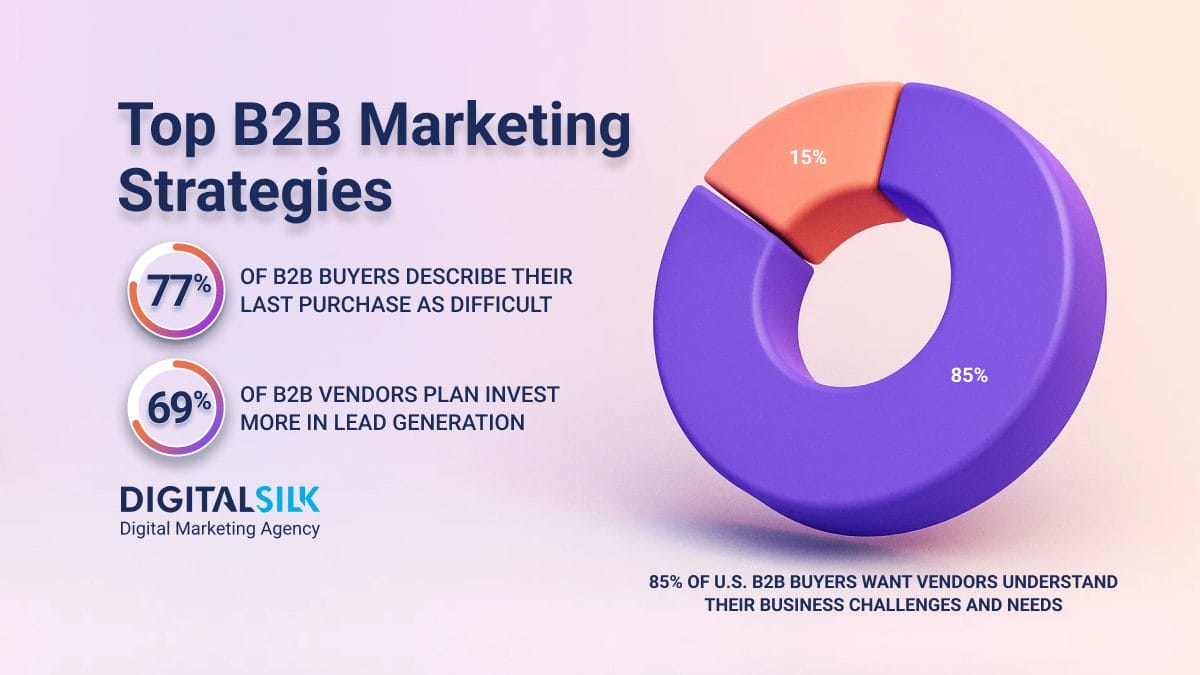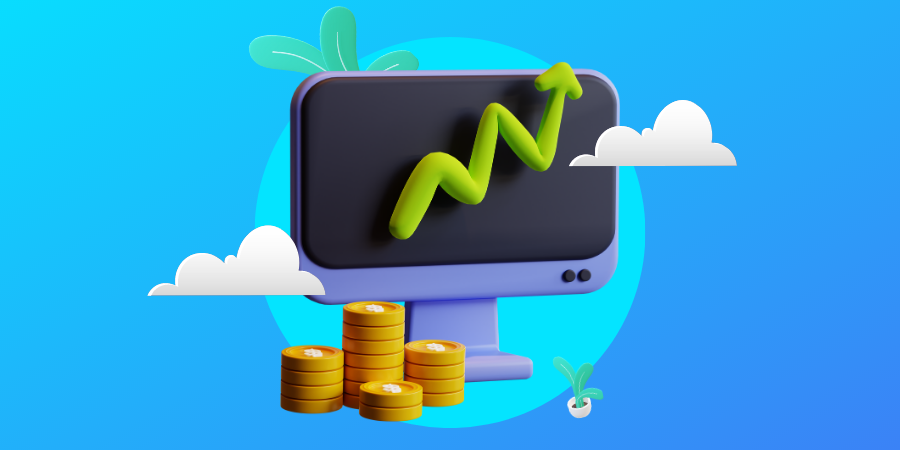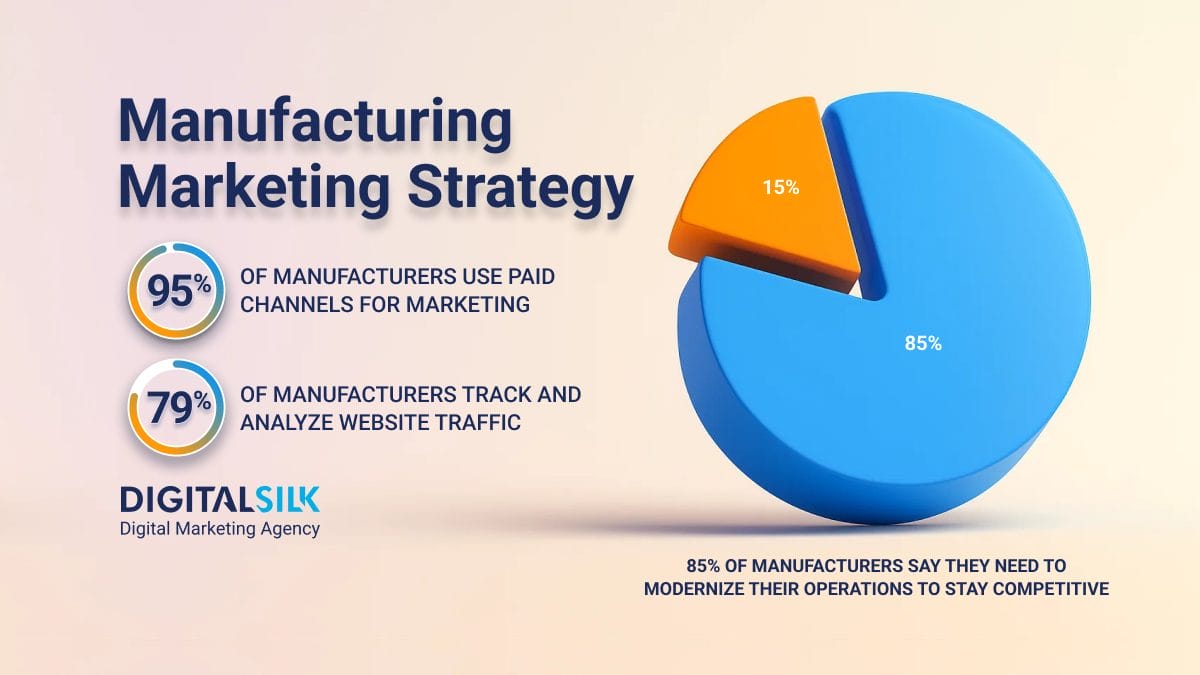SaaS Statistics — Key Highlights
-
The global SaaS market is projected to hit $793.1 billion by 2029, with the U.S. alone expected to account for $445.59 billion of that total.
-
SaaS will power 85% of all business software in 2025, marking a massive shift toward cloud-based solutions across industries.
-
Companies now use an average of 112 SaaS apps, but 73% of employees don’t use their assigned licenses.
Software as a Service (SaaS) has become the backbone of modern business operations, powering everything from customer relationship management to payroll.
As more companies shift to cloud-based models, the SaaS industry continues to grow at an impressive pace. In 2025, it’s projected to reach $299.07 billion, driven by rising demand across industries and global markets.
This growth goes beyond convenience, signaling a major shift in how companies adopt and manage technology.
In this article, we look at top 47 SaaS statistics that show just how essential the industry has become.
General SaaS Statistics
SaaS has become the go-to model for delivering software, supporting everything from daily operations to enterprise infrastructure.
As adoption continues to grow, businesses are navigating new considerations around pricing, deployment and long-term planning. These shifts reflect the expanding role of cloud-based solutions in nearly every sector.
The following general SaaS statistics provide a look at how the industry is changing and what businesses should be paying attention to:
- SaaS is projected to make up for 85% of all business software in 2025.
- By 2028, 75% of enterprises are expected to treat backing up SaaS applications as a top priority.
- Nearly 75% of SaaS purchases are made directly from the supplier.
- Only about 23% of SaaS contracts are multi-year.
- 54% of SaaS businesses use a per-user pricing model for their services.
- Financial services software is the leading industry for SaaS companies with $25.6 billion in revenue worldwide as of January 2024.
- The financial services software sector has the largest global SaaS workforce, employing 133,100 people.
- It’s projected that 95% of new digital workloads in 2025 will be deployed on cloud-native platforms.
What These Numbers Mean For You
- SaaS is the new default. With most business software now delivered through the cloud, companies still relying on legacy systems may face limitations in flexibility, integration and speed.
- Backing up your SaaS data matters. As more critical operations move to cloud platforms, protecting that data is essential. Businesses should have reliable backup and recovery systems in place for their SaaS tools.
- Shorter contracts give flexibility but limit savings. With most SaaS deals being year-to-year, many companies prioritize adaptability. However, longer commitments can offer cost advantages and stability if the product is a long-term fit.
SaaS Usage Statistics
SaaS usage has expanded from a few core tools to dozens of apps spread across teams and functions. Businesses are continually adopting new software to support everything from collaboration to analytics.
As the number of apps rises, so does the challenge of understanding what’s in use and what’s going to waste.
The following stats highlight how companies are navigating their growing SaaS stacks:
- On average, companies in the U.S. use 112 SaaS apps.
- In 2024, 53% of IT teams said they had increased the number of SaaS apps they use.
- IT teams in organizations manage 26.1% of SaaS spend.
- 50.5% of SaaS apps are brought into the organization by its business units.
- Organizations handle an average of 247 SaaS renewals per year.
- 73% of respondents in a survey said they consider SaaS to be important to their business success.
- 55% of organizations find SaaS challenging to manage.
- An average company wastes $135,000 in unused licenses.
- 73% of employees don’t use their some or all apps provided by their company.
- 85% of organizations use SaaS apps that are unknown or unmanaged.
- 70% of organizations have dedicated SaaS security teams.
- 70% of organizations also have moderate to full visibility into their SaaS applications.
What These Numbers Mean For You
- Better visibility leads to better decisions. Companies with strong visibility into their SaaS stack are better positioned to track ROI, spot inefficiencies and implement smarter software strategies that align with their goals.
- You may be overspending without realizing it. With so many apps in use — and many going unused — your business could be paying for licenses that deliver little or no value. Regular audits can help identify redundant or underutilized tools and reduce waste.
- Shadow IT is a real risk. When business units adopt apps without IT oversight, it creates gaps in security, compliance and cost control. Establishing clear policies and improving app visibility across departments can help prevent this.
SaaS Spending And Revenue
SaaS is no longer a minor line item — it’s a major and growing part of IT budgets.
As businesses scale and digital operations expand, spending on cloud-based software continues to rise across nearly every industry. But with that growth comes pressure to justify costs, optimize usage and make smarter investment decisions.
Here’s what the latest spending trends reveal about where the money is going:
- 17% of businesses worldwide spend between $600,000 and $1.2 million on SaaS.
- Cloud spending is projected to surpass 45% of all enterprise IT spending by 2026.
- The average SaaS spend in 2024 was $8,700 per employee.
- SaaS spending increased 9.3% year-over-year in 2024.
- 85% of all SaaS spend goes to renewals, while 15% is allocated to new apps.
What These Numbers Mean For You
- SaaS spending is becoming a strategic decision. With significant budgets going toward software, each purchase should be tied to measurable business value. Treating SaaS like any other major investment ensures better ROI and accountability.
- Renewals dominate the budget. Most SaaS spending is tied up in existing contracts rather than new tools. That makes it essential to regularly review renewals to ensure you’re not locking in outdated, overpriced or underused apps.
- Year-over-year increases should prompt deeper analysis. A growing budget isn’t necessarily a bad thing — but it should reflect evolving needs, not inefficiencies. Tracking usage data, negotiating contracts and consolidating redundant tools can help keep costs under control.
SaaS Market Statistics By Country
SaaS adoption is expanding worldwide, but growth looks different from one region to the next. The U.S. continues to lead the way with a well-established market, while other countries are quickly catching up as cloud-based software becomes essential to business operations.
Understanding these differences is key for companies aiming to scale globally and focus on the most promising opportunities.
The following SaaS industry statistics show how SaaS markets are developing across different parts of the world:
- The global SaaS market is predicted to hit reach $793.1 billion by 2029.
- The U.S. SaaS market is projected to reach $445.59 billion by 2029.
- China’s SaaS market is projected to reach $37.98 billion by 2029.
- India’s SaaS market is projected to reach $9.22 billion by 2029.
- Germany’s SaaS market is projected to reach €15.3 billion in 2025.
What These Numbers Mean For You
- The U.S. remains the SaaS capital. With the largest share of global revenue, the U.S. is still the most competitive and mature SaaS market. Success here often signals strong global potential — but it also comes with high customer expectations and tight competition.
- Emerging markets are gaining ground. Countries like India and China are seeing steady SaaS growth, fueled by tech adoption and digital infrastructure investment. These regions offer long-term growth opportunities for companies looking to expand internationally.
- Local strategies matter. The differences in market size and growth pace mean that a one-size-fits-all approach won’t work globally. Adapting your pricing, product and marketing to local conditions is key to gaining traction in international markets.
The Use Of AI In SaaS
Artificial intelligence (AI) is becoming a key driver of innovation in the SaaS industry. From predictive analytics to personalized user experiences, AI is reshaping how software is built, delivered and optimized.
But with rapid adoption also come new challenges — especially around cost, oversight and strategic execution.
The following SaaS statistics highlight how AI is being integrated into SaaS and what that means for the future of software:
- The global AI SaaS market is valued at $101.73 billion in 2025.
- The AI SaaS market is projected to grow at a CAGR of 39.4% between 2025 and 2032.
- 70% of SaaS companies with AI features are either experimenting or already monetizing their AI products.
- 39% of SaaS companies say the costs associated with implementing an AI strategy.
- 91% of organizations use AI tools that are unmanaged.
What These Numbers Mean For You
- The software you use is getting smarter. Even if your company isn’t building AI tools, the SaaS platforms you rely on are likely integrating them. This means you can benefit from more automation, personalization and efficiency — if you know how to use these features effectively.
- AI is no longer a competitive edge — it’s becoming standard. As more SaaS companies build AI into their products, customers will increasingly expect intelligent features as a baseline.
- Early adoption offers a competitive edge. Companies that start testing and applying AI features today are more likely to find efficiencies and innovations that set them apart in the future. Even small experiments can lead to meaningful gains.
SaaS Companies Statistics
The growth of the SaaS industry is powered by a few key companies that have redefined how businesses use technology — with Salesforce, headquartered in San Francisco, at the forefront.
These companies not only generate massive revenues but also define how millions of businesses operate, collaborate and scale. By looking at their performance, we can get a clearer picture of where the industry is headed — and which platforms are leading the way.
The following figures spotlight the biggest names in SaaS and their influence on the market:
- Salesforce reported a revenue of $34.86 billion in 2024, making it the world’s top-performing SaaS company.
- Salesforce holds 21.7% of the world’s CRM market.
- Salesforce has over 150,000 customers.
- Microsoft reported a revenue of $77.73 billion from its productivity and business processes in 2024. The revenue from its intelligent cloud was $105.36 billion.
- Over 1.2 million companies in the U.S. use Microsoft 365.
- Microsoft’s Azure is projected to reach $200 billion in revenue by 2028.
- The top-tier SaaS companies saw a 26.6% average stock price increase in 2024.
What These Numbers Mean For You
- Industry leaders shape your tech stack. Whether it’s through CRM, cloud storage
,or productivity tools, the largest SaaS companies often power the software backbone of modern businesses. Their products are hard to avoid — and often essential to stay competitive. - Market dominance signals reliability. Companies like Salesforce and Microsoft aren’t just popular — they’re proven. Their scale, infrastructure and continued growth often make them safer bets for long-term business operations.
- Rapid growth reflects strong demand. The rising stock values and expanding user bases of top SaaS firms indicate that businesses continue to invest heavily in cloud-based solutions. This trend reinforces the need to stay current with emerging features and updates.
SaaS Marketing Statistics
Marketing plays a major role in how SaaS companies grow, compete and capture customer attention.
Whether through content creation, paid campaigns or optimized landing pages, SaaS businesses invest heavily to stand out in a crowded field. But not all strategies deliver equal results and knowing where to focus can make a big difference.
These SaaS marketing statistics offer a clearer picture of how companies are allocating their efforts and where they’re seeing returns:
- More than 50% of revenue at most SaaS companies is allocated to sales and marketing costs.
- Around 53% of all traffic to SaaS websites comes from their blogs.
- Landing pages of SaaS companies generate only 12% of total traffic.
- The average conversion rate for landing pages in the SaaS industry is 3%.
- 92.31% of SaaS companies that run webinars use the recorded videos as lead magnets.
What These Numbers Mean For You
- Consistent blogging drives traffic and engagement. SaaS content marketing statistics show that high-performing companies attract and educate users through valuable content — offering a clear lesson for any business looking to grow its online presence and bring in more qualified leads.
- Marketing investments should be performance-driven. With over half of SaaS company revenue going toward marketing, these statistics remind all businesses to closely track ROI and adjust tactics based on what delivers actual growth.
- Webinar content has lasting power. A striking 92.31% of SaaS companies that host webinars repurpose the recordings as lead magnets. This not only extends the value of the original event but also helps boost brand awareness over time.
Build Your SaaS Website With Digital Silk
Recent SaaS statistics show just how fast the industry is growing — and in a crowded market, standing out takes more than a great product. You need smart, data-driven marketing that attracts the right audience, builds trust and turns interest into real growth.
At Digital Silk, we are a full-service digital marketing agency that helps SaaS companies build brand awareness, generate qualified leads and increase customer retention.
Our team of strategists, creatives and tech experts work together to craft marketing solutions that deliver measurable results.
Other services we offer include:
Contact our team, call us at (800) 206-9413 or fill out the Request a Quote form below to tell us about your SaaS project.
"*" indicates required fields


